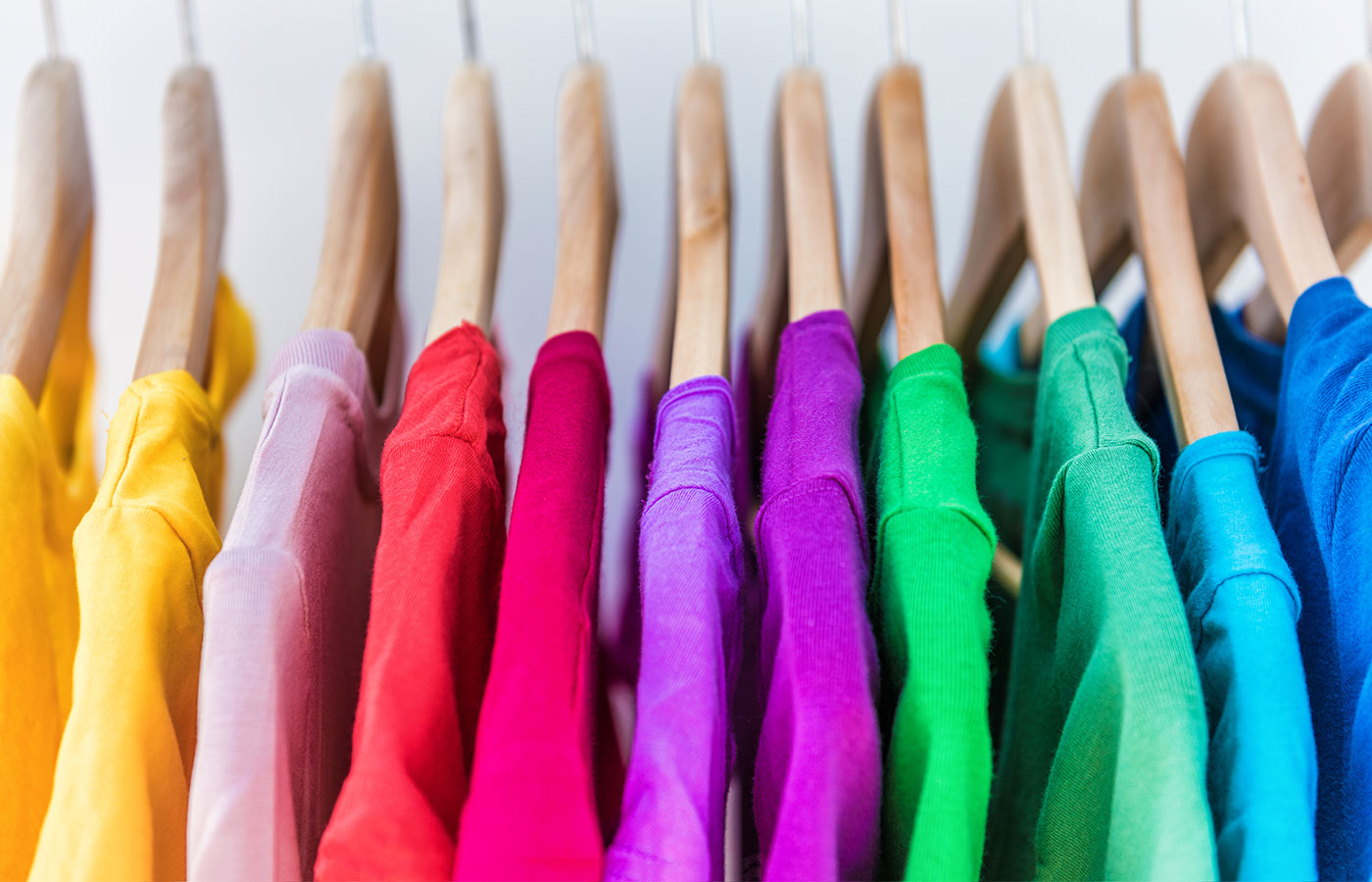Comprehending Garments: The Relevance of Fabric Selections in Your Wardrobe
The choice of textile in clothes plays a pivotal duty in both appearances and capability. Different materials provide differing degrees of durability, convenience, and breathability, directly influencing the user's experience. Comprehending these nuances can improve one's closet markedly. Yet, many overlook how these options can impact not just personal style, but likewise sustainability. What fabric choices could redefine your closet and straighten it with both design and responsibility?
The Duty of Textile in Fashion and Capability

Typical Textile Types and Their Features
When picking apparel, comprehending the qualities of common textile kinds is essential for making informed options. Cotton, a widely-used all-natural fiber, is known for its versatility, breathability, and softness, making it ideal for sportswear and day-to-day garments. Linen, an additional natural option, flaunts excellent moisture-wicking residential properties and a distinctive structure, perfect for cozy climates.Wool, often preferred for its warmth and resilience, differs in fineness; merino wool is soft versus the skin, while coarser kinds are made use of for outerwear. Artificial textiles like polyester and nylon offer longevity and resistance to creases, making them popular for activewear and travel garments. Finally, blends, which incorporate all-natural and synthetic fibers, can enhance performance while maintaining comfort. By recognizing these textile characteristics, people can pick clothing that lines up with their way of life and visual preferences.
Breathability and Convenience: Picking the Right Fabrics for Various Climates
Choosing the ideal materials for different climates can greatly boost comfort and general wearability. Breathable materials are essential in warm environments, as they permit air flow and wetness evaporation. Fabrics such as cotton, bed linen, and moisture-wicking synthetics successfully draw sweat away from the body, keeping the wearer cool and completely dry. On the other hand, in cooler climates, thicker textiles like wool or fleece supply insulation while keeping breathability, ensuring heat without overheating.Additionally, the choice of material weight plays a vital duty; lightweight fabrics are better for summer, whereas larger options are suited for winter season wear. Comprehending the unique buildings of each textile allows people to dress properly for differing climate condition. Eventually, selecting breathable and comfy fabrics tailored to certain environments can greatly improve everyday convenience and boost the overall experience of using apparel.
Toughness and Treatment: Exactly How Textile Affects Durability of Your Wardrobe
Selecting the ideal materials can significantly influence the longevity and treatment needs of a closet. Fabrics such as cotton and polyester are understood for their resilience and convenience of maintenance, making them optimal for everyday wear. In comparison, fragile products like silk and shoelace require even more mindful handling and specialized cleansing approaches, which can enhance the time and effort needed for care. Branded Clothing.Durability is additionally affected by the material's weave and coating; tightly woven materials have a tendency to withstand deterioration much better than loosely woven alternatives. In addition, synthetic blends usually give enhanced sturdiness, this post integrating the very best top qualities of multiple fibers.Understanding the treatment guidelines for each textile is essential, as incorrect drying or washing can result in premature wear. Ultimately, choosing sturdy materials can result in a longer-lasting wardrobe, reducing the frequency of substitutes and contributing to a much more sustainable fashion choice
The Effect of Fabric on Fit and Shape

Sustainable Material Options: Making Eco-Friendly Decisions
The influence of textile prolongs beyond fit and silhouette to include environmental elements, motivating an expanding passion in sustainable textile options. Environmentally friendly materials, such as organic cotton, hemp, and Tencel, are acquiring traction among consumers that focus on sustainability in their wardrobes. These materials are often generated with fewer chemicals and water, reducing their environmental footprint.Additionally, recycled materials, made from post-consumer waste, use a cutting-edge solution to the fabric sector's contamination trouble. Brands significantly embrace transparency in their sourcing techniques, permitting customers to make educated choices about their purchases.Choosing sustainable fabrics not only sustains moral methods but additionally urges the garment industry to adopt even more responsible production techniques. As understanding of ecological issues climbs, individuals are prompted to assess the long-lasting impact of their textile options, promoting an activity towards a much more sustainable and eco aware technique to fashion.
Raising Style: Exactly How Fabric Can Transform an Outfit
While several might concentrate on shade and cut when picking an outfit, the choice of material plays a vital role in boosting design and improving overall appearance. Various products communicate distinct moods and messages; for instance, go to this web-site silk emanates luxury and elegance, while denim uses an informal, loosened up vibe. The texture and drape of a fabric can significantly change the shape, with structured fabrics supplying a sleek appearance and softer ones developing a more fluid, loosened up aesthetic.Moreover, the weight of the textile influences wearability throughout seasons. Light-weight textiles like bed linen and cotton are optimal for summer season, while larger products such as wool and velour supply heat and style in cooler months. Comprehending fabric residential or commercial properties, such as breathability and stretch, also encourages people to make informed selections that enhance comfort without compromising style. Eventually, the appropriate textile can change a clothing from average to phenomenal, making it an essential factor to consider in any type of closet.
Regularly Asked Inquiries
Just how Do I Determine the Fabric Web Content of My Apparel?
To identify textile material, one can check out care tags, conduct shed examinations for fiber recognition, or speak with fabric examples. These methods help distinguish products, making sure educated selections for clothes treatment and maintenance in everyday wear.
Can Material Choice Affect My State Of Mind or Confidence?
Textile option can substantially affect a person's mood and self-confidence. Branded Clothing. Specific materials might evoke feelings of convenience or beauty, while others can really feel uncomplimentary or limiting, eventually affecting self-perception and emotional wellness throughout the day
What Fabrics Are Best for Delicate Skin?
For individuals with delicate skin, all-natural fabrics like cotton, bed linen, and bamboo are commonly recommended. These materials are breathable, hypoallergenic, and less most likely to cause inflammation, making them appropriate choices for convenience and skin health and wellness.
Exactly how Do I Correctly Laundry and Care for Different Fabrics?
To correctly clean and care for various textiles, one should take into consideration each product's particular needs, consisting of temperature settings, cleaning agents, and drying methods, guaranteeing long life and preserving the fabric's original top qualities for optimal use.
Are There Specific Fabrics for Athletic or Efficiency Put On?
Athletic or performance wear commonly uses materials such as nylon, spandex, and polyester. These products are developed for moisture-wicking, breathability, and adaptability, enhancing activity and convenience during physical tasks while giving durability and support. Conversely, in colder environments, thicker textiles like woollen or fleece supply insulation while keeping breathability, ensuring heat without overheating.Additionally, the choice of textile weight plays an important role; lightweight textiles are preferable for summertime, whereas much heavier choices are suited for wintertime wear. In comparison, delicate materials like silk and lace require more careful handling and specialized cleansing techniques, which can enhance the time and initiative needed for care.Durability is also affected by the material's weave and surface; firmly woven materials often tend to withstand wear and tear much better than loosely woven alternatives. In contrast, inflexible materials can limit motion but give a timeless, refined look.Moreover, the thickness and appearance of the material can influence the aesthetic assumption of body shape. The impact of material expands past fit and shape to encompass ecological variables, motivating a growing rate of interest in sustainable textile choices. The texture and drape of a fabric can drastically alter the shape, with structured textiles offering a refined appearance and softer ones producing an extra fluid, kicked back aesthetic.Moreover, the weight of the textile affects wearability across see this website periods.